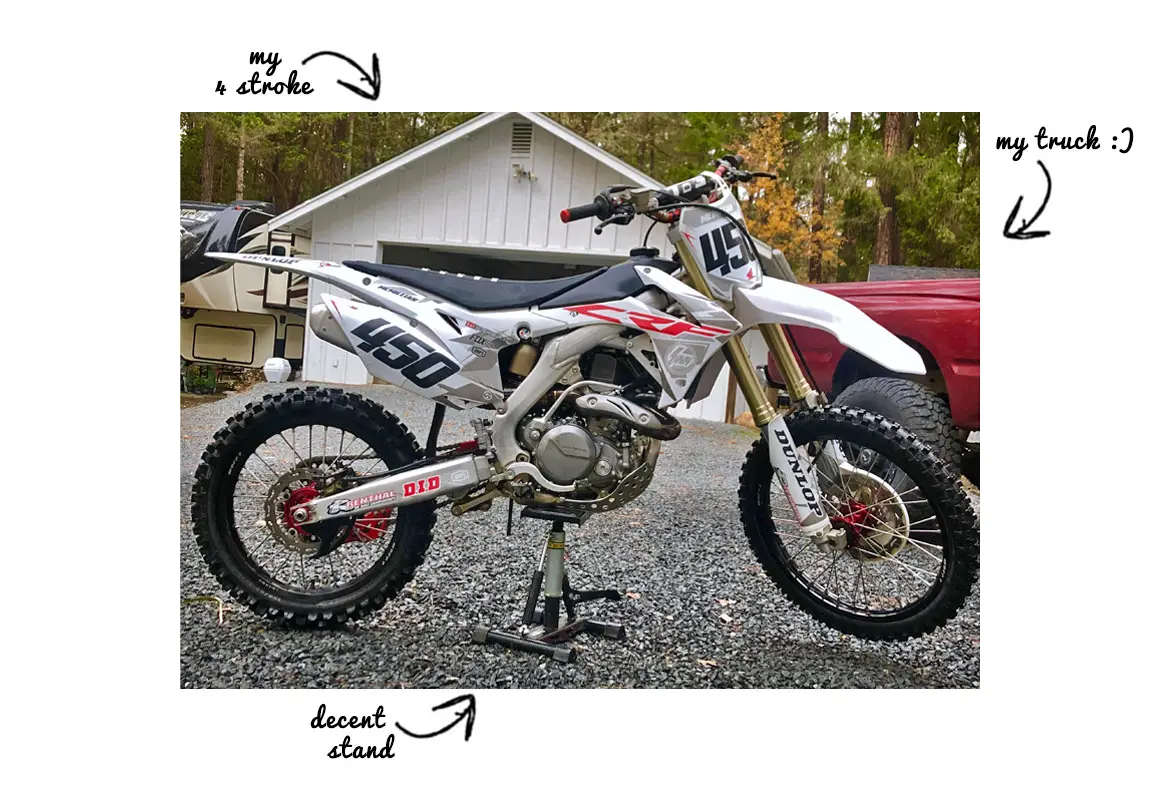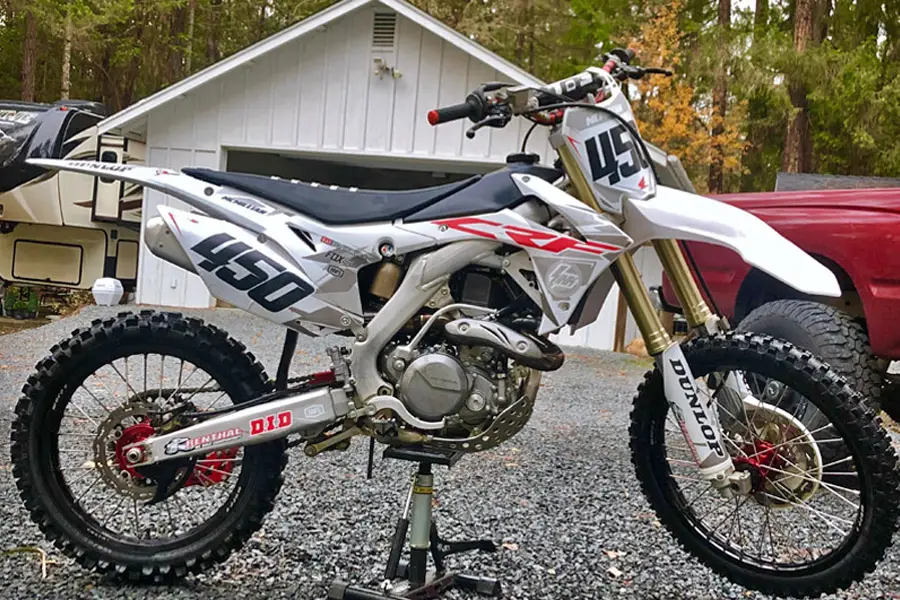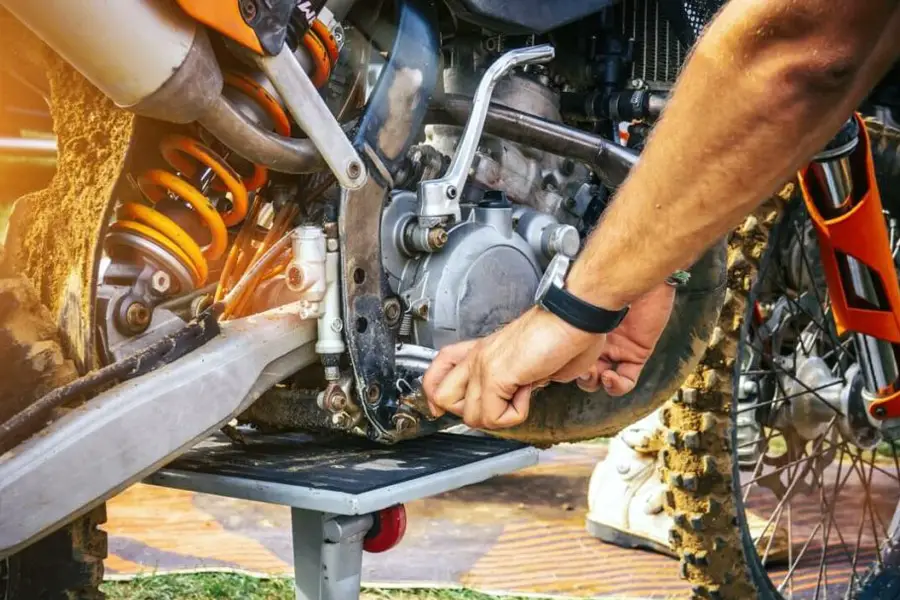How a 4 Stroke Dirt Bike Engine Works and a Look at the Four Stages
BraapAcademy.com earns a small commission from qualifying purchases.
This does NOT cost you extra.
Contents
Dirt bikes these days are awesome. Whether you get a newer 2 stroke or a newer 4 stroke, you’ll probably be happy. That said, I’m a 4 stroke guy… overall. I do love 2 strokes for certain types of riding, but when it comes to power control and handling, I feel that 4 strokes have an advantage – especially for beginners. Also, 4 stroke engines are more fuel efficient than 2 stroke engines and they’re more environmentally-friendly.

Components of The Engine
- The pistons form the basis of the combustion engine
- The cylinder block and head house the pistons
- The fuel inlets and the exhaust outlet play their part in the operation of the engine
- The crankshaft connects to the piston shaft and drives the power to the gearbox and rear wheel via the clutch
How the 4 Stroke Dirt Bike Engine Works
The high-level overview of the engine is that it has four cycles of a piston (or four strokes). There’s a cool animation of the engine at work at Animated Engines. Two upward strokes and two downward strokes make up the 4 strokes of the engine. The 4 strokes are known as the intake, compression, power, and the exhaust strokes.
This is why it is important to use an exhaust plug (like this) whenever you’re washing your bike.
The Four Stages of a 4 Stroke Engine
- Intake Stroke
During the first stroke, the piston moves and the fuel valves open. This allows the air-fuel mix into the combustion chamber. - Compression Stroke
The second stroke is when piston rises up in the cylinder barrel and compresses the air-fuel mixture. This is known as the compression stroke. - Power Stroke
Third is this the power stroke. During this third stroke the piston is forced away from the cylinder head by the hot/expanding gases causing a high amount of pressure. - Exhaust Stroke
The exhaust valves are opened during this fourth stroke to let out the burnt fuel (or exhaust) that was created from the compressed fuel mixture. The burnt fuel is forced out by the upward motion of the piston.
The “Cons” of a 4 Stroke Engine
As I already mentioned, there are quite a few advantages to having 4 stroke dirt bike over a 2 stroke. However, there are disadvantages as well. In fact, from many aspects, a 2 stroke could be viewed as better.
Four stroke dirt bikes are generally heavier and have less power than their 2 stroke rivals. As you may already know, a 125 cc 2 stroke puts out equivalent power as a 250 cc 4 stroke. Also, 4 strokes tend to cost more money than 2 strokes for the more involved maintenance and rebuilds.




